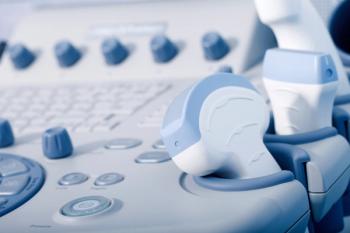
Fewer Pap Tests More Cost-Effective for Some Middle-Aged Women
Many middle-aged women are getting more Pap tests than they need. Women aged 45 to 60 are typically advised to get an annual Pap test, noted George Sawaya, MD, Associate Professor of Obstetrics, Gynecology, and Reproductive Science at the University of California San Francisco. But in a paper presented yesterday, Dr. Sawaya concluded that women with a history of three or more normal Paps should only be screened once every 3 years.
Many middle-aged women are getting more Pap tests than they need. Women aged 45 to 60 are typically advised to get an annual Pap test, noted George Sawaya, MD, Associate Professor of Obstetrics, Gynecology, and Reproductive Science at the University of California San Francisco. But in a paper presented yesterday, Dr. Sawaya concluded that women with a history of three or more normal Paps should only be screened once every 3 years.
"The annual screening of already well-screened women is not an effective use of health care resources," Dr. Sawaya said. "That is the provocative result of our study."
The UCSF group analyzed data from enrollees at the Centers for Disease Control and Prevention's National Breast and Cervical Cancer Early Detection Program. Researchers stratified the prevalence of biopsy-proven cervical neoplasia by age (under 30 years, 30 to 45, 45 to 60, and 60 to 65) and by screening history (1, 2, and 3 or more consecutive negative tests). They compared lifetime costs, life expectancy, and quality of life adjusted years (QALYs) associated with screening annually, biannually, or triennially until age 65 versus no further screening.
Among women between ages 45 and 60, the incremental cost-effectiveness ratios ranged from $249,854 for triennial screening to nearly $1.5 million for annual screening.
"Let's assume that getting cervical cancer is the equivalent of death," Dr. Sawaya suggested. "That is quite an extreme assumption since cure rates are significant with early detection. The incremental cost-effectiveness ratio (ICER) is still over $300,000 per QUALY for annual screening."
In most comparisons, he noted, only ICERs of less than $100,000 per QUALY are considered to be cost-effective. Only triennial screening meets that test for women between 45 and 60.
"Screening women with a history of 3 or more negative Pap tests more than once every 3 years is not cost-effective," Dr. Sawaya said. "When you take into account the stress and discomfort associated with screening, annual screening is clearly a suboptimal use of resources."
Newsletter
Get the latest clinical updates, case studies, and expert commentary in obstetric and gynecologic care. Sign up now to stay informed.










